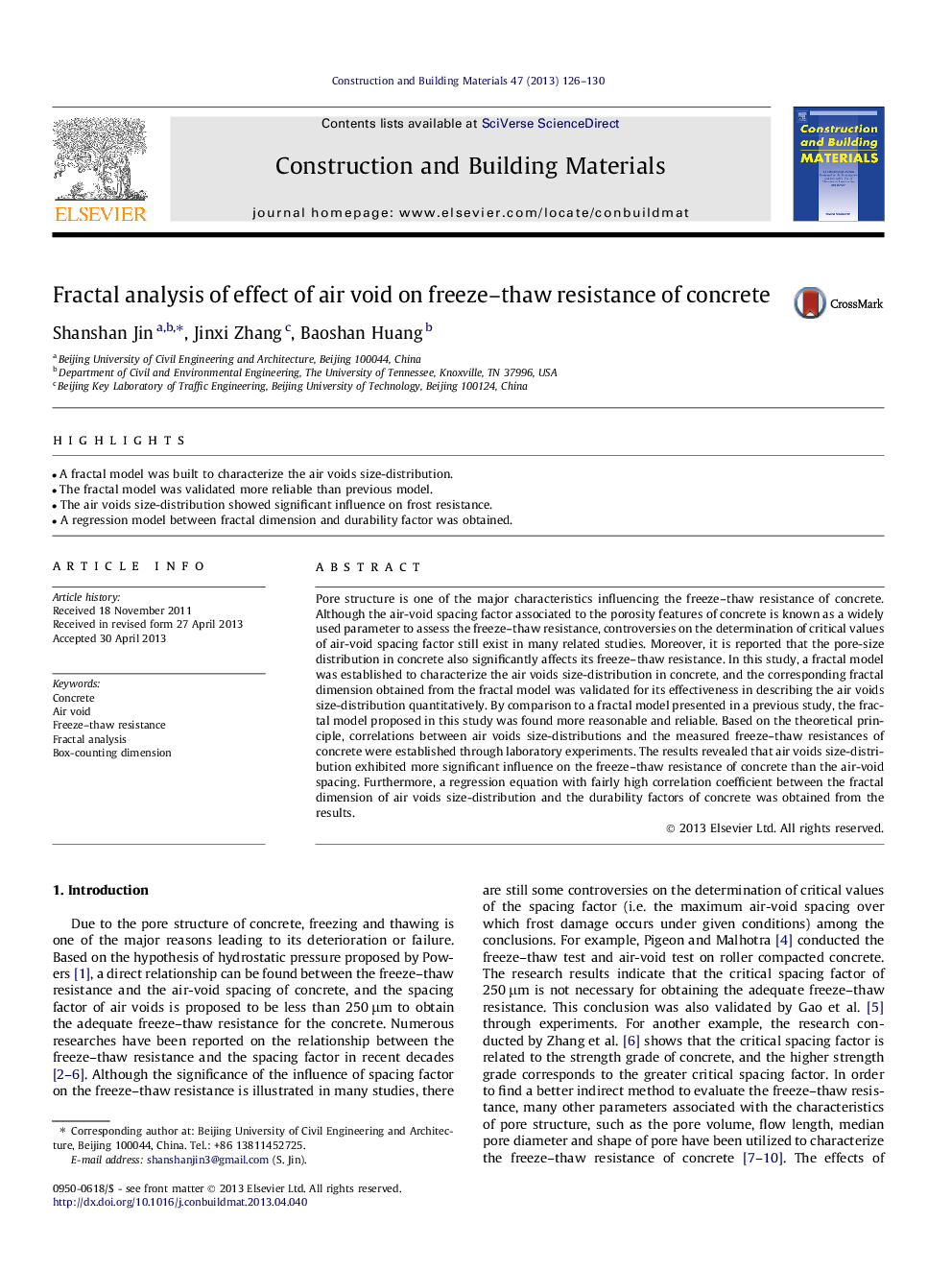| Article ID | Journal | Published Year | Pages | File Type |
|---|---|---|---|---|
| 6725093 | Construction and Building Materials | 2013 | 5 Pages |
Abstract
Pore structure is one of the major characteristics influencing the freeze-thaw resistance of concrete. Although the air-void spacing factor associated to the porosity features of concrete is known as a widely used parameter to assess the freeze-thaw resistance, controversies on the determination of critical values of air-void spacing factor still exist in many related studies. Moreover, it is reported that the pore-size distribution in concrete also significantly affects its freeze-thaw resistance. In this study, a fractal model was established to characterize the air voids size-distribution in concrete, and the corresponding fractal dimension obtained from the fractal model was validated for its effectiveness in describing the air voids size-distribution quantitatively. By comparison to a fractal model presented in a previous study, the fractal model proposed in this study was found more reasonable and reliable. Based on the theoretical principle, correlations between air voids size-distributions and the measured freeze-thaw resistances of concrete were established through laboratory experiments. The results revealed that air voids size-distribution exhibited more significant influence on the freeze-thaw resistance of concrete than the air-void spacing. Furthermore, a regression equation with fairly high correlation coefficient between the fractal dimension of air voids size-distribution and the durability factors of concrete was obtained from the results.
Related Topics
Physical Sciences and Engineering
Engineering
Civil and Structural Engineering
Authors
Shanshan Jin, Jinxi Zhang, Baoshan Huang,
